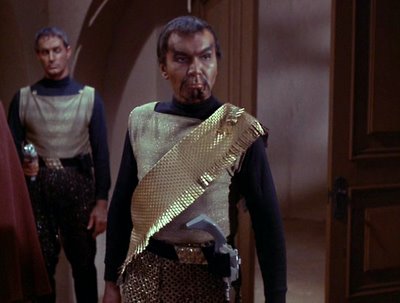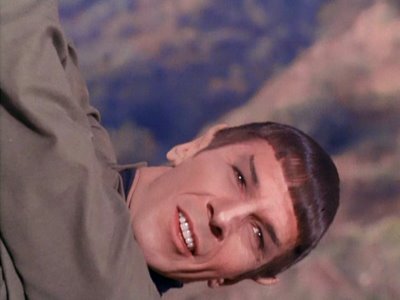"Errand of Mercy"
When the Enterprise journeys to the planet Organia to offer aid to the inhabitants on the eve of war with the Klingons, Kirk is astonished to learn that the seemingly-backwards and defenseless Organians want none of the Federation's help. The arrival of Klingon Commander Kor does nothing to change their minds, and it's only later, after Kirk and Kor nearly destroy each other, that the Organians reveal that they have evolved beyond the fleshy, violent ways of the majority of species in the galaxy. The Organians's interference with Kirk and Kor's conflict helps Kirk to see the path both parties were starting down, and peace wins over war.
Story
"Errand of Mercy" is a powerful if somewhat slow episode of Trek. It's message about war and the blind foolishness of violence is one that was timely back in the 60s and certainly now. Kirk is well characterized here, and so too is Kor.
Action
The episode features some attacks on the Enterprise and Kirk and Spock's nightime destruction of a Klingon weapons depot, but there are no classic Kirk flying kicks here. The emphasis is on the nature of violence, not its glorification.
Performances
All involved give great performances. Shatner successfully brings us into Kirk's dilemma, and the Organians are sufficiently frustrating in their non-aggressiveness.
Trektastic Moments
This episode is a huge one in the annals of Trek lore, as it sees the debut of the Klingon Empire. John Colicos offers his first outing as Kor, a role he would reprise decades later on Star Trek: Deep Space Nine, often considered the spiritual successor to the original Star Trek.
Overall
This episode is thought provoking and engaging, though its pace is somewhat slow. Nevertheless, it is a crucial episode to the Trek mythology and faces the viewer to look at the ugly truths of war and violence. Another A+ episode.
The episode's title card.

The peaceful but mysterious Organians.

The first appearance of the Klingons in the person of Commander Kor, played by John Colicos.




















